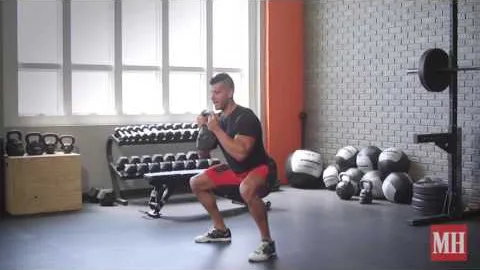
If you're looking to enhance your lower body strength, increase muscle mass, and improve your athletic performance, the mechanical change squat exercise is an excellent addition to your workout routine. This dynamic compound exercise targets the muscles of your legs, hips, and glutes, making it an effective move for building lower body strength and power.
The mechanical change squat exercise, also known as the barbell squat or simply squat, is a versatile movement that involves bending your knees and hips to lower your body while holding a barbell across your upper back. It is considered a compound exercise because it engages multiple muscle groups simultaneously.
To properly execute the mechanical change squat exercise, follow these steps:
Incorporating the mechanical change squat exercise into your fitness routine can offer numerous benefits, including:
The mechanical change squat primarily targets the muscles of your lower body, including your quadriceps, hamstrings, glutes, and calves. By regularly performing this exercise, you can increase the strength and size of these muscles, leading to enhanced overall lower body strength.
Squats are known as a highly-effective compound exercise for building muscle mass. Engaging multiple muscle groups simultaneously stimulates muscle growth and helps you achieve a more sculpted lower body.
Strong lower body muscles are crucial for athletic performance in sports such as running, jumping, and agility-based activities. The mechanical change squat exercise can help improve your power, explosiveness, and overall performance in these areas.
Squats mimic movements we perform in our daily lives, such as sitting down and standing up. By strengthening the muscles involved in these movements, you can enhance your functional fitness, making everyday activities easier and more efficient.
While the mechanical change squat exercise offers numerous benefits, it's essential to prioritize safety and proper form. Here are some key considerations to keep in mind when performing squats:
To maximize the benefits of the mechanical change squat exercise, consider incorporating them into your existing workout routine. Here are some suggestions:
The mechanical change squat exercise is a powerful compound movement that offers a wide range of benefits for lower body strength, muscle growth, and overall athletic performance. By performing squats with proper form and gradually challenging yourself with increased weights, you can optimize your workouts and achieve noticeable results. Remember to prioritize safety and always consult with a healthcare professional or fitness expert before starting any new exercise program. Start incorporating mechanical change squats into your routine, and enjoy the transformative effects on your lower body strength and performance.
If you're looking for a gym, fitness club or yoga studio, you've come to the right place.
You can find information about gyms in your area. Browse catalog of gyms and find gyms with classes which are you looking for.
On gym page you can find simple information like address, phone or website. You can find list of available classes. You can check availability of personal training or small group classes. On place page you can also see information about open hours.
You can find gyms near you with amenities, courts, studios and equipments.
Use our map to find gym at your city or district.
In Gym Navigator you can find list of exercises with movies for many body parts.
You can browse exercises catalog and find exercises the best of you.
You can also find exercises grouped into workout plans, which you can use to improve you body. Each routine show you exercises one by one and give you possibility to count you progress and count down rest time.